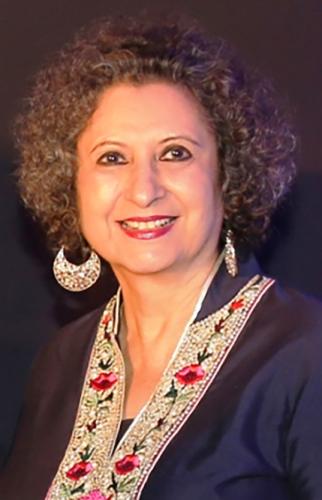The needs and aspirations of ordinary women are not reflected in the Indian fashion scene.
Fashion comes with exciting double-binds. It expresses individuality, but also leads to the conventionalism of a crowd. It is an art, a grand mirror of erudition; its roots are deep within European history, sculpture, fable, philosophy and drama. Yet, it is also commerce and determinedly money-minded at that. Fashion is about women but it is also about men and how women see themselves through the eyes of men. It is this set of contradictions that infuses fashion with continual excitement and energy in the West. It is precisely the lack of such volatility and tension in Indian fashion that makes it just business, not art.
Fashion in the West is characterized by its ability to startle and jolt. This is accomplished by its best artists who capture and display the changes their societies undergo. The career of the French designer, Yves Saint Laurent, is illustrative. Where his predecessors produced clothing for Euro-American socialites, reflecting their elite lifestyles, “YSL” broke that mould, suddenly designing trousers, skirts and jackets for a new kind of woman altogether. His designs were shaped by wide social experiences of which war was perhaps the most formative.
The Second World War changed women in the West forever as many left their homes to join war efforts. Suddenly, the wearing of trousers by women, which afforded mobility and freedom, was no longer a provocative act by teasing socialites. It was sheer practicality and afforded a new sense of power to the ordinary woman. YSL's designs reflected this fresh understanding, placing women's grasp of their own strength at the forefront of his art.
YSL captured other changes as well. As young people in the West increasingly rejected materialistic, martial cultures the 1960s onwards, exploring alternative modes of life and thought, YSL's designs reflected a return to simpler peasant customs. As decolonization gripped the world and an awareness of the rich beauty of non-Western arts shook the West, YSL introduced black models on the runway and designed clothes vividly reflecting a mix of cultures and ethnicities.
Of course, like his predecessors, YSL also aimed at his clothes being bought by wealthy socialites. However, his designs drew deeply from the big changes ordinary people were creating and experiencing each day. Few Western designers were able to ignore this move.
In this sense, fashion in India is in marked contrast to the West. Today, India stands at one of the most exciting crossroads of change in its young history. Liberalization has transformed every facet of its society. The shape of the State, the public and private, reality and entertainment — everything — has changed. India is going through enormous shifts, which its ordinary people are driving, its turmoil reflected as much in the dust of its building sites as in the gloss of its shiny new cars. This is an extraordinarily exciting time for any artist to try and capture change, to freeze a little of this tumult and present a view of what is happening to interested minds.
Yet, fashion in India shrinks from this challenge, withdrawing from this exciting public sphere to the dullness of a sequestered private zone. Examine Indian fashion and you will find that instead of reflecting changes in philosophies, politics and professions, it caters to three categories of consumption — bridal, casual and party wear. While casual and party-wear target the metropolitan socialite as consumer, the first category targets a wider range and has a disturbing implication writ into the beautiful lehengas it manifests.
Bridal wear as the center-piece of Indian fashion is based on marriage as a social transaction, not marriage as the pledging of love and trust between two individuals. This is about marriage as a contract between well-matched families, an expensive ritual topped by politicians patting the heads of its main participants at a glitzy reception where no one understands the language in which the ceremonial verses are read. This kind of marriage is about public performance and suitable alliance, not passion or the shaky excitement of two people venturing together into uncharted territory. The basing of Indian fashion on conventional marriage is disturbing because of the way it limits innovation in view and design, the energies of younger artistes choked by the tyranny of organza dupattas and the making of young women into matrons well before their time.
In all this, the working woman is lost to Indian fashion. There are few designers out there paying attention to the importance of more and more women joining the diverse workplaces India now features. There are few designers catering to the ordinary professional woman. There are no Indian designers producing those essentials for the working woman — accommodating handbags, comforting sunglasses or well-heeled shoes — that afford women as much power as pleasure to dip into. For all that, there are corporatized retail brands which offer brown jackets and shirts in standard whites and blues, not designs that understand the excitement of change and offer their own perspective on this.
Indian designers instead locate their imagination in zones like nightclubs, studios, resorts and airports, all of which symbolize aspiration but are too limited to mean much more than money. This is a monumental missing of meaning and a lazy overlooking of the changes India and its women are undergoing. As fashion in India continues to cater to the rich and powerful, its ordinary women fall back on its ordinary craftsmen whose designs give them the style and practicality they need.This is a profound alliance.This relationship, rooted in the rural, the non-corporate, and the quietly anonymous, gives fashion in India a unique twist of its own.











